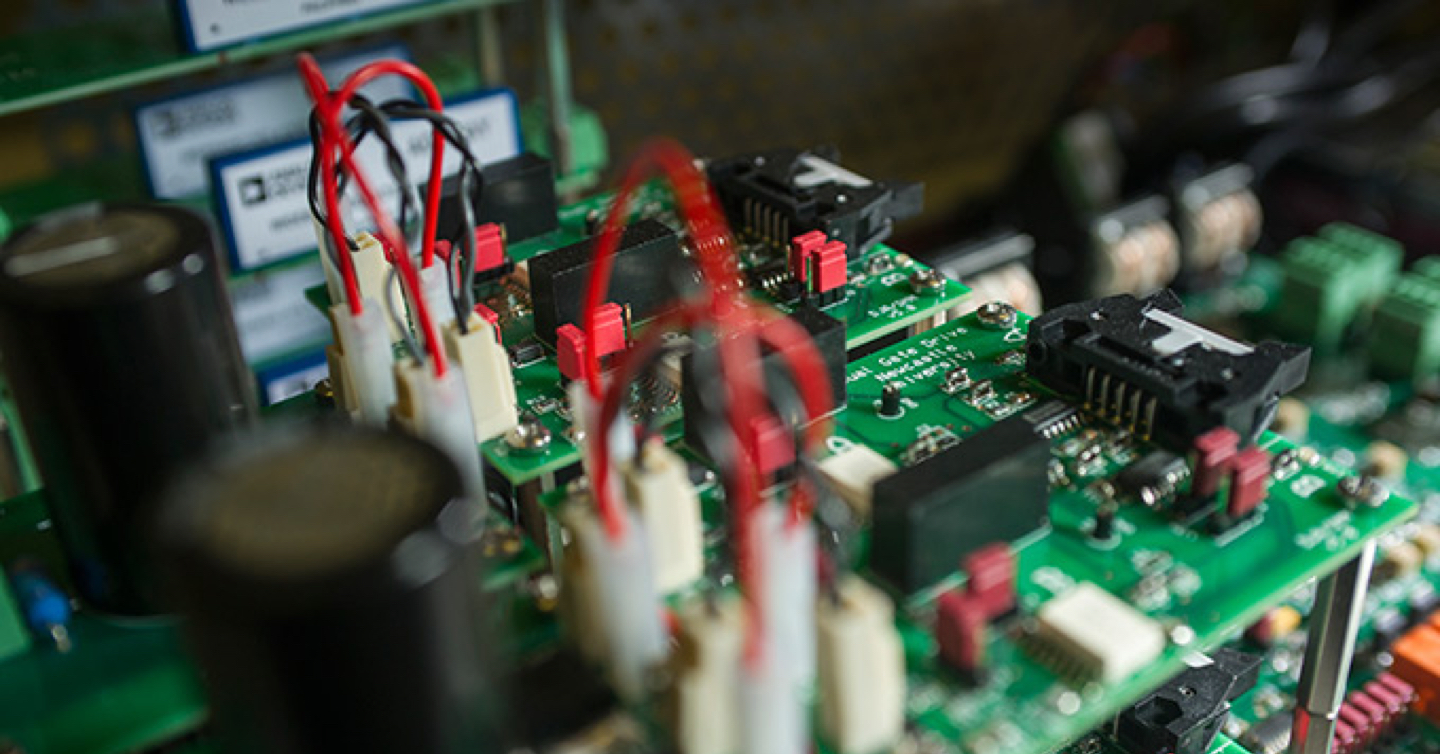Najib Kabir Dankadai
Improving torque control in switched reluctance motors.
- Email: n.k.dankadai2@ncl.ac.uk
Project title
Torque control of magnet-assisted switched reluctance motor (MSSRM)
Supervisors
- Dr Mohammed Elgendy
- Dr Dave Atkinson
- Dr Steve McDonald
Project description
Over the last decade, the Magnet-Assisted Switched Reluctance Motor (MSSRM) has gained interest in applications for:
- Electric Vehicles and Hybrid Electric Vehicles (EVs/HEVs)
- more-electric aircraft
- industry
- white goods
This is mainly because of its low-cost, fault-tolerance, simple structure and wide speed range of operation. But it inherently suffers from large torque ripple and machine nonlinearities.
This project proposed a new Direct Instantaneous Torque Control (DITC) of an MSSRM. Based on a new Adaptive Switching Quasi-Sliding-Mode (QSM) control, it minimises the torque ripple of the motor. In addition to the improved torque characteristics, the size, cost, reliability and robustness of the overall system are of great concern.
We need to ensure the reliability of the motor drive’s hardware and control algorithm. We have investigated the reliability and complexity of several widely used control methods for SRM drives. We based our invesigations on information flow complexity within the control technique. We designed the QSM control after considering the findings.
Furthermore, the power electronics needed to operate the drive increase its cost and volume. They also reduce its running reliability. Hence, we need to reduce the number of switches, diodes and sensors involved by improving the power converter topology. Thus, we propose a sensorless control of MSSRM using a single current sensor and Resistor-Dump (R-Dump) converter.
An R-Dump converter has a minimal power component compared to converters like an asymmetric half-bridge converter. We developed the sensorless control based on a new sliding mode observer. This reduces the feedback sensors by only using a single current measurement to estimate the rotor position of the MSSRM. We are comparing different methods, including:
- Current Chopping Control (CCC)
- Torque Sharing Function-based Direct Instantaneous Torque Control (TSF-DITC)
- Direct Torque Control (DTC)
- the proposed QSM control
Our results show that the proposed method achieved superior torque characteristics. It maintains good reliability, smaller size and lower cost.
Publications
- Dankadai NK, Elgendy MA, Mcdonald SP, Atkinson DJ, Atkinson G. Model-Based Sensorless Torque Control of SRM Drive Using Single Current Sensor. In: Proceedings of The 10th International Conference on Power Electronics, Machines and Drives (PEMD) 2020. UK: Nottingham (Accepted).
- Dankadai NK, Elgendy MA, McDonald SP, Atkinson DG, Atkinson G. Investigation of Reliability and Complexity of Torque Control for Switched Reluctance Drives. In: IEEE International Conference on Power Electronics and Renewable Energy (CPERE 2019). 2019, Aswan, Egypt: IEEE.
- Dankadai NK, Elgendy MA, Mcdonald SP, Atkinson DJ, Ullah S, Atkinson G. Assessment of Sliding Mode Observer in Sensorless Control of Switched Reluctance Motors. In: 13th IEEE International Conference on Power Electronics and Drive Systems (PEDS 2019). 2019, Toulouse, France: IEEE.
- Dankadai NK, McDonald SP, Elgendy MA, Atkinson DJ, Ullah S, Atkinson G. Direct Instantaneous Torque Control of Switched Reluctance Motor for Aerospace Applications. In: 2018 53rd International Universities Power Engineering Conference (UPEC). 2018, Glasgow, UK: Institute of Electrical and Electronics Engineers Inc.
- Dankadai NK, Faudzi AAM, Bature A, Babani S, Faruk MI. Position Control of a 2D Gantry Crane System using Model Predictive Controller. In: Applied Mechanics and Materials. 2015, 735: 282-288.
- Dankadai NK, Faudzil AAM, Osman K, Rusydi M, Razifl M, Nordin INAM. System Identification and Control of a Two Chambers Pneumatic Soft Actuator. In: Proceedings of 2nd Mini Symposium on Artificial Intelligence and Robotics (AIR). 2014, Kuala Lumpur, Malaysia.
- Faruk MI, Bature A, Babani S, Dankadai NK. Conventional and Intelligent Controller for Quarter Car Suspension System. In: Proceedings of 2nd International Conference on Science and Technology (ICST). 2014, Kuala Lumpur Malaysia.
- Babani S, Bature AA, Faruk MI, Dankadai NK. Comparative Study Between Fiber Optic and Copper in Communication Link. In: International Journal of Technical Research and Applications. 2014, 2(2): 59-63.
Interests
Modelling and automatic control of nonlinear systems, machine learning
Qualifications
- MEng (Hons) Mechatronics and Automatic Control, Universiti Teknologi Malaysia
- BEng (Hons) Computer Engineering, Bayero University
Najib Dankadai Najib DankadaiLinkedIn
